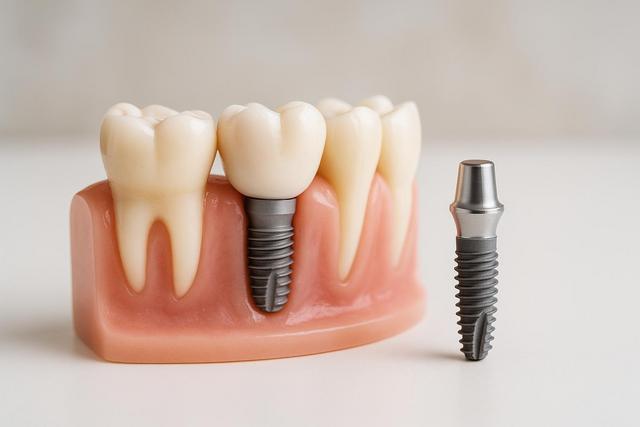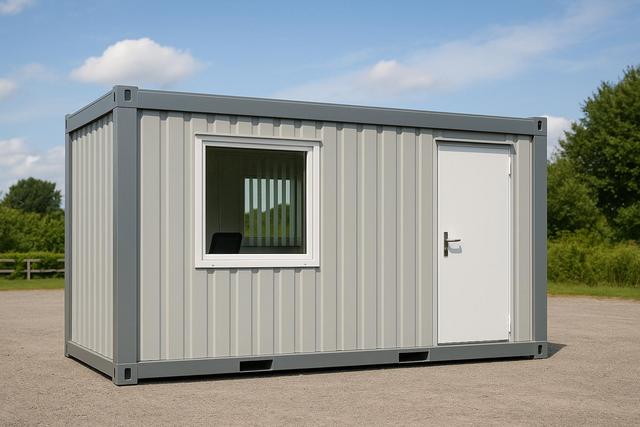
Dental Implants: Benefits, Longevity, and Everyday Care
Outline
Dental Implants: Benefits, Longevity, and Everyday Care — an actionable guide to what implants do, how long they tend to last, and how to look after them day to day.
- What dental implants are and how they work
- Everyday benefits you can feel
- Longevity: survival, success, and what influences both
- Daily and professional care routines
- Who is a candidate and key risk factors
- Treatment timeline and loading strategies
- Implants vs. bridges vs. dentures (comparison table)
- Cost considerations and insurance notes
- Pro tips for smoother recovery and long-term care
- Frequently asked questions
- Websources
What dental implants are and how they work
A dental implant is a biocompatible post placed into the jaw to serve as an artificial tooth root, topped by an abutment and a custom crown. This three-part design restores function and appearance in a way that closely mirrors a natural tooth, according to the American Dental Association [1]. The U.S. Food and Drug Administration describes implants as medical devices that support crowns, bridges, or dentures and notes that titanium and zirconium oxide are among commonly used materials [2].
How it integrates: after placement, bone remodels around the implant surface (osseointegration), creating a stable anchor for chewing forces [1]. As the FDA explains, “Dental implants are medical devices surgically implanted into the jaw to restore a person’s ability to chew or their appearance” [2].
Everyday benefits you can feel
When appropriately planned and maintained, implants can enhance day-to-day life by stabilizing chewing, helping maintain jawbone volume, and supporting natural speech. Regulatory and professional bodies highlight these benefits:
- Chewing confidence and comfort — implants transfer bite forces to bone, which can feel more natural than removable appliances [2].
- Bone preservation — stimulation of the jaw helps slow post-extraction bone resorption [2].
- Tooth-friendly — single-tooth implants don’t require preparing adjacent teeth, unlike traditional bridges [1].
- Retention for dentures — implants can anchor removable overdentures, improving stability compared with conventional dentures [9].
Longevity: survival, success, and what influences both
Two helpful terms often appear in the research:
- Survival: the implant remains in the mouth and functional.
- Success: includes survival plus criteria like healthy tissues, no persistent pain, and acceptable bone levels.
What the evidence suggests
- At 10 years, contemporary implants show a high survival estimate of about 96.4% at the implant level across prospective studies [3].
- Across ≥10-year follow-ups, pooled survival is reported around 94–95%, with modest average marginal bone loss when properly maintained [4].
- Peri-implant diseases (inflammation around implants) are a real-world factor: recent meta-analyses indicate roughly one in five people may experience peri-implantitis over time, with mucositis even more common [5, 6].
What about the crown on top? While the implant fixture can last decades, the visible crown or bridge may need periodic replacement due to wear and tear; 10–15 years is a commonly cited range in general references, depending on materials and habits [7].
Takeaway: With strong home care, regular professional maintenance, and control of risk factors (such as smoking and uncontrolled diabetes), many patients enjoy long service lives from their implants [8, 2].
Daily and professional care routines
Evidence-based maintenance keeps tissues healthy and supports longevity:
- Brush twice daily with a soft manual or electric brush, focusing at the gumline of implant crowns.
- Clean between teeth/implants daily using floss, interdental brushes sized to fit, or water flossers (ask your dental team which suits your restoration). Regular biofilm disruption is key [8].
- Schedule recall visits at intervals your clinician recommends to assess bleeding on probing, pocket depths, mobility, occlusion, excess cement, and bone levels [8, 9].
- If you wear an implant overdenture, remove and clean it daily; professional sources emphasize access to clean around abutments and bars [10].
Expert note: The European Federation of Periodontology’s S3 guideline recommends a “supportive peri-implant care programme” with periodic assessments once implants are in function [8].
Who is a candidate and key risk factors
General health, oral conditions, and habits influence candidacy and outcomes:
- The FDA advises discussing benefits and risks, the brand/model of the system used, and your overall health, as healing capacity and long-term success vary [2].
- Smoking: national public health sources flag higher risks for gum disease and potential implant complications; cessation support meaningfully improves outcomes [11]. A 2019 review identifies tobacco use as a significant risk factor for peri-implant diseases [12].
- History of periodontitis, diabetes control, and oral hygiene levels are among important considerations in recent meta-analyses [5].
Important: Your dentist or specialist may coordinate care with your physician to optimize metabolic control (e.g., diabetes) and stop-smoking support before surgery [2, 11].
Treatment timeline and loading strategies
Your pathway can be immediate, early, or conventional (delayed) loading:
- Immediate loading: restoration placed within a week of surgery.
- Early loading: typically within 1–2 months.
- Conventional loading: after ≥2 months, once osseointegration is established.
Systematic reviews indicate that, in selected cases, immediate or early loading can achieve outcomes comparable to conventional protocols; however, some analyses find a slightly higher failure risk for immediately loaded implants versus conventionally loaded ones, underscoring the need for careful case selection and primary stability [13, 14]. For implants placed at the time of extraction, evidence remains mixed regarding advantages versus delayed placement, with aesthetics and complication profiles varying by case [15].
Implants vs. bridges vs. dentures (quick comparison)
| Feature | Single/Multiple Implants | Fixed Bridge | Conventional Denture |
|---|---|---|---|
| Anchorage | Into bone; independent of adjacent teeth [1] | Uses adjacent teeth as abutments | Sits on gums; suction/adhesive |
| Tooth preparation | No prep of neighbors [1] | Requires shaping adjacent teeth | Not applicable |
| Bone preservation | Maintains local stimulation [2] | Limited effect on bone | Bone resorption common over time |
| Stability | Fixed; overdentures can clip to implants | Fixed | May loosen as bone/gum contours change [10] |
| Maintenance | Hygiene like teeth plus implant-specific checks [8] | Floss threaders under pontics | Daily removal and cleaning [10] |
Which option is right for you depends on bone volume, neighboring teeth, health conditions, and personal preferences. Discuss pros and cons with your dentist using your imaging and examination findings.
Cost considerations and insurance notes
Fees vary widely by geography, the number of implants, need for grafting or sinus augmentation, and the type of restoration (single crown, bridge, or full-arch). Dental insurance may contribute to portions of surgical or restorative phases, but coverage is plan-specific. A pre-authorization and a written treatment plan with itemized codes can help you estimate out-of-pocket costs. Consider long-term value: durable function and tooth preservation can reduce downstream procedures for some patients; your dentist can outline scenarios for your case [9].
Recovery and long-term care: practical pointers
- First 24–72 hours: follow your surgical instructions, favor soft, cool-to-warm foods, and avoid smoking or vaping during the early healing window [2].
- Weeks 1–6: gentle brushing near the site, then resume full hygiene as advised; schedule your follow-up for assessment.
- Ongoing: twice-daily brushing, daily interdental cleaning, and recall intervals personalized to your risk profile (e.g., history of periodontitis may warrant closer monitoring) [8].
FAQs
Dental Implants: Common Questions
How long do dental implants last?
Many function for decades. At 10 years, survival rates around the mid-90s percent are reported in systematic reviews, assuming appropriate care and risk control [3, 4]. The crown may eventually require replacement due to normal wear [7].
Are implants safe?
Implant systems are regulated medical devices, evaluated for biocompatibility and performance. Your provider will match system choice and timing to your health and bone conditions [2].
Can smokers get dental implants?
Yes, but smoking increases risks of complications and peri-implant disease; cessation support is strongly encouraged before and after surgery [11, 12].
Is immediate loading right for me?
It can be suitable in selected cases with excellent primary stability and favorable bite forces. Your clinician will assess bone quality, implant torque, and parafunctional habits before recommending it [13, 14].
How do implants compare with bridges and dentures?
Implants don’t rely on adjacent teeth and can help preserve bone; bridges and dentures are established alternatives with different trade-offs in tooth preparation, bone changes, and maintenance routines [1, 10].
Websources
- American Dental Association — Implants
- U.S. FDA — Dental Implants: What You Should Know
- Systematic Review (2019) — 10-year implant survival
- Systematic Review (2014) — ≥10-year outcomes
- Systematic Review (2025) — Peri-implant disease risks and incidence
- BMC Oral Health (2022) — Peri-implantitis prevalence
- General Reference — Crown longevity overview
- EFP S3 Guideline (2023) — Prevention and treatment of peri-implant diseases
- American Academy of Periodontology — Implant procedures and follow-up
- ADA — Denture care and maintenance
- CDC — Tobacco use and oral health facts
- Review (2019) — Tobacco-product usage as a risk factor
- Cochrane — Loading times for implants
- Meta-analysis (2019) — Immediate vs. conventional loading
- Cochrane — Implants in fresh extraction sockets


